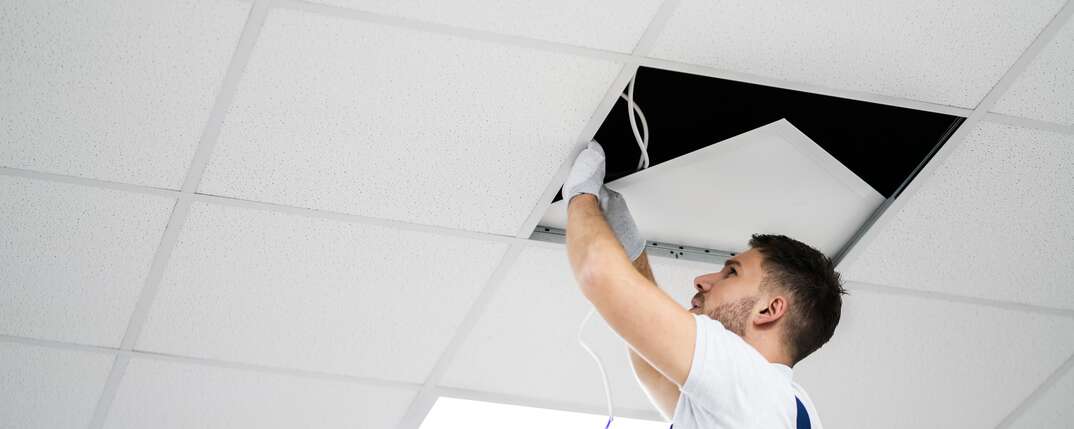Dropped ceiling installations provide a versatile and aesthetically pleasing solution for enhancing the look and functionality of interior spaces. As you embark on a dropped ceiling project, it’s essential to understand the various cost considerations involved. From materials to labor and additional features, thoughtful planning can help you manage your budget effectively. In this guide, we’ll explore the key factors to consider when estimating the costs of a dropped ceiling installation project.
1. Material Costs
Ceiling Tiles:
- Prices vary based on material type (mineral fiber, vinyl, metal).
- Custom designs and textures may incur additional costs.
Grid Systems:
- Aluminum and steel grids have different price points.
- Concealed tee grids may be more expensive than exposed tee grids.
Suspension Wires:
- Stainless steel wires are typically more expensive but offer durability.
2. Room Size and Complexity
- Larger rooms require more materials and labor, impacting overall costs.
- Complex room layouts with irregular shapes or obstacles may increase installation time and costs.
3. Labor Costs
- DIY installations save on labor but require your time and skill.
- Professional installation ensures expertise but comes with additional labor costs.
4. Ceiling Height and Accessibility
- Higher ceilings may require longer suspension wires and additional materials.
- Easy accessibility can reduce labor costs, while challenging spaces may increase installation time and expenses.
5. Lighting Integration
- Including lighting fixtures in the dropped ceiling design adds to the overall cost.
- Recessed lighting or specialized fixtures may incur higher expenses.
6. Additional Features
- Acoustical Properties: Opting for tiles with enhanced sound absorption may increase material costs.
- Fire Resistance: Materials with higher fire-resistant ratings may come at a premium.
- Insulation: If energy efficiency is a priority, consider materials with added insulation properties.
7. Maintenance and Repairs
- Factor in potential future maintenance costs.
- Quality materials may reduce the need for frequent repairs.
8. Permitting and Code Compliance
- Check local building codes and permit requirements.
- Costs associated with permits and code compliance may vary.
9. Professional Consultation and Design Services
- Hiring professionals for design consultation or project management may incur additional fees.
10. Waste Disposal
- Plan for the removal and disposal of old ceiling materials, which may contribute to overall project costs.
Tips for Cost Management:
- Get Multiple Quotes:
- Obtain quotes from different suppliers and contractors to compare prices.
- Prioritize Materials:
- Allocate budget to high-quality materials that align with your project goals.
- Consider DIY:
- Evaluate the feasibility of a DIY installation to save on labor costs.
- Bundle Materials:
- Purchase materials as a package deal when possible to reduce overall costs.
- Energy Efficiency:
- Invest in materials that contribute to energy efficiency, potentially reducing long-term costs.
- Regular Maintenance:
- Choose materials that require minimal maintenance to reduce future expenses.
- Plan for Contingencies:
- Set aside a contingency budget for unexpected expenses that may arise during the project.
Understanding these cost considerations and planning accordingly will help you navigate the dropped ceiling installation process with financial confidence. Whether you’re working on a residential or commercial project, thoughtful budgeting ensures a successful and cost-effective outcome for your dropped ceiling installation.
